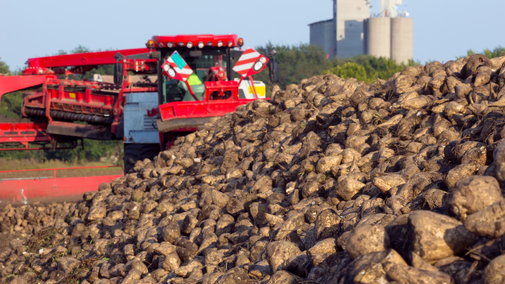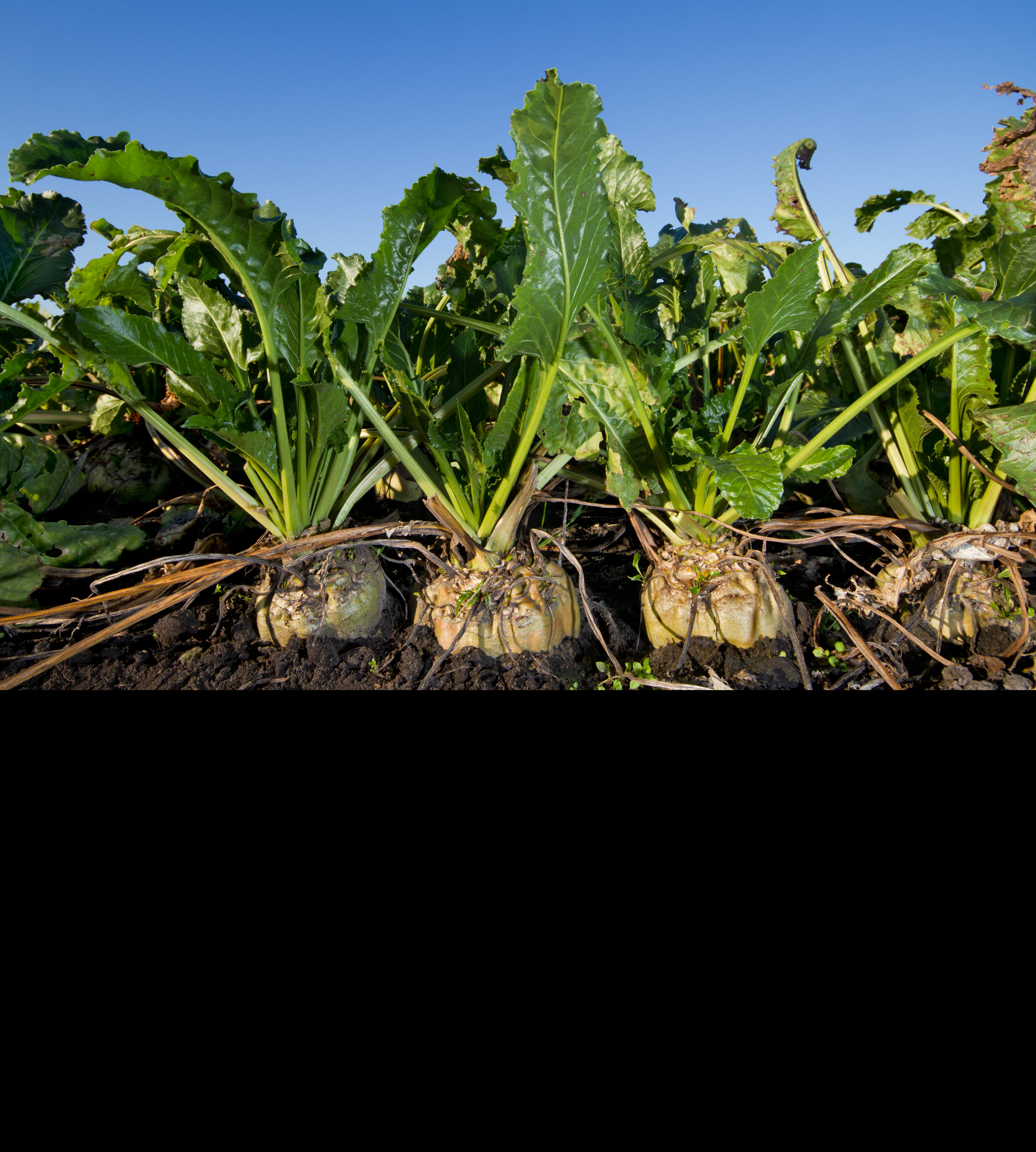
Nebraska Sugarbeet Production
Nebraska ranks 5th in U.S. production of sugarbeets. Sugarbeets are grown entirely in the Panhandle and some western counties of the state. In 2022, Nebraska's sugarbeet production resulted in $39.3 million from 39,600 acres harvested, according to USDA National Agricultural Statistics Service. Production in 2023 increased to 46,600 acres harvested.
Contact:
Dipak Santra
Alternative Crops Specialist
(308) 632-1230
dsantra2@unl.edu
Faculty Bio

Sugarbeet Production Resources
In-Season Resources
Sugarbeet Production Guide
In 2013, Nebraska Extension published an updated version of the Sugarbeet Production Guide, a 248-page, spiral-bound, full color publication with in-depth information about all phases of sugarbeet production. The previous edition was published in 2001.
Every chapter of the Sugarbeet Production Guide was revised. Many of the photos and tables have been updated. The new edition addresses weed resistance to glyphosate herbicides. Since the previous edition, Roundup Ready sugarbeets have become available and are now almost universally planted in the United States. The active ingredient in Roundup is glyphosate. The new edition also reflects other changes, such as the discovery of new sugarbeet diseases, new threats from insects, and changes in machinery.
The book has 16 chapters on topics such as growing beets to maximize sucrose yield; seed and varieties; crop rotation; tillage and seedbed preparation; wind erosion control; planting; fertilizing; insect management; weed control; disease management; irrigation management; harvest, production economics; and scouting and injury diagnosis. It also includes an introduction and glossary.
The Sugarbeet Production Guide is available for $50 per copy on the Extension marketplace. The production guide is published by UNL Extension in cooperation with Colorado State University, Montana State University, the University of Wyoming, and the USDA Agricultural Research Service, Sugarbeet Research Unit at Fort Collins, Colorado.
Other UNL Sugarbeet Resources
Other Extension Publications Related to Sugarbeets
- Nebraska Crop Budgets for Sugarbeets (Both PDF and Excel Spreadsheet)
(This page includes budgets for all crops arranged alphabetically; scroll down to sugarbeets) - Sugarbeet Nutrient Management, G1459
- Aphanomyces Root Rot of Sugarbeet , G1407
- False Root-Knot Nematode, G1857
- Cercospora Leaf Spot of Sugarbeet, G1753
- Rhizomania of Sugarbeet, G1842
Nebraska's Sugarbeet Industry
Sugarbeets are a major contributor to the U.S. sweetener industry, and occur in a vast range of different food products. Of the current world production of more than 130 million metric tons of sugar, about 35% comes from sugarbeet and 65% from sugar cane. In the USA, about 50-55% of the domestic production of about 8.4 million metric tons derives from sugarbeet.
In North America, 11 states and two provinces are involved with sugar beet production, in regions as diverse as the upper Midwest (Minnesota and North Dakota), the far west (California, Idaho, Oregon and Washington), the Great Plains (Colorado, Nebraska, Montana, Wyoming, and Alberta), and the Great Lakes (Michigan and Ontario).
Sugarbeets in Nebraska
Sugarbeet production in Nebraska began in 1890, with the first factory being established in Grand Island. Production moved into western Nebraska and the Panhandle early in the 20th Century, due in large part because of increasingly severe problems with Cercospora leaf spot.
A detailed history of sugarbeet production in Nebraska
Nebraska currently ranks 5th in the U.S. in production (USDA NASS, 2021) and generally ranges between 45,000-60,000 acres planted per year, with a high of 80,000 in 2000. Sugarbeets are additionally a very important crop economically and are estimated to contribute more than $130,000,000 to the local economy through payrolls, property taxes, and other impacts.
Western Sugar Cooperative
The Great Western Sugar Company brought the sugar industry into Colorado in 1901 before expanding into Nebraska, Wyoming and Montana. After undergoing several different changes of ownership, the Western Sugar Cooperative was formed in December of 2002 consisting of more than 1,000 growers in Colorado, Nebraska, Wyoming and Montana. The Cooperative today operates throughout these four diverse states with approximately 135,000 base acres. Western Sugar currently operates processing plants at Scottsbluff, Nwebraska, Billings, Montana, Lovell and Torrington, Wyoming, and Fort Morgan, Colorado. Storage facilities are additionally located at Greely, Rocky Ford, Sterling, and Longmont, Colorado, and Gering and Mitchell, Nebraska. Like its impact in Nebraska, sugarbeets contribute substantially to the economies within the four-state growing region. During 2007, the record $700 million paid to producers generated about $4.9 billion as it moved throughout those communities.
Zone Tillage and Narrower Rows — Will They Work?
Will zone-tillage machines work for sugarbeets in narrower, 22-inch rows in heavy corn residue and wheat stubble? That was the question behind an on-farm demonstration in May 2010 in Box Butte County, Nebraska, in which zone tillage machines from six manufacturers were operated in real-world conditions. Each machine was 12 rows wide with 22-inch row spacing. Click to watch videotaped comments from manufacturers' representatives, local growers, Western Sugar Cooperative Agriculturalists, and John Smith, retired UNL Extension Machinery Systems Engineer.
Sugarbeet Seed Spacing Calculator
This interactive webpage is designed to calculate how much seed you will need for a particular field, a particular variety, part of a field for a particular variety, or for your entire crop.
You have two calculator options, depending on your choice of input. Calculator "A" requires you to input your row spacing, the seed spacing you will plant, and the number of acres for this particular combination of variety and field size. Calculator "B" requires you to input your row spacing, your target established plant population, your estimate of percent emergence in this particular field, and the number of acres for this particular combination of variety and field.
You can enter new information and perform the calculation again for as many combinations as you want. You can also print out the results with input information for each calculation.
